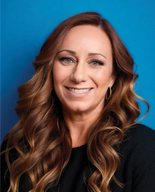BY: Daniela Sartori
Director of Sales Operations, Benefit Indemnity Corporation
Phone: 443-275-7401
Email: daniela.sartori@benefitindemnity.co
Understanding the Renewal Process
The first thing to know about renewals is that it's always better to share renewal news—whether it's good or bad—in person. Scheduling a face-to-face meeting with your client to review their renewal rates is highly recommended. Renewal rates are typically released about 55 days prior to the plan anniversary date, and along with these rates, a summary of their claims utilization is provided. This is the perfect opportunity to go over the reports and explain how their funds have been used.
The aggregate report will show 9 months of claims utilization. Pay special attention to the Year-to-Date Surplus Column to see how your client's claims are trending. This will give you an idea of whether they're on track to receive a surplus check at the end of the plan year. Last year, we returned nearly $1,000,000 in unused claim funds, and we're on track to return nearly $1,700,000 this year!
Next, be sure to explain how the renewal rate is calculated. Several factors influence the final renewal rates:
- Medical Trend: This is the overall increase in medical costs and utilization of PPO health plans in the market.
- Underwriting Factor: This is based on your group's size, current conditions, and predicted risk and prognosis for the upcoming year.
- Demographic Factor: This takes into account the age, gender, employment status, and dependent status of all covered members, as well as their location. The combined risk characteristics of all members are used to determine the rate for the entire group.
Make sure to compare the current employee listing with the renewal to confirm that all employees used to calculate the renewal rate are still enrolled in the plan. Changes in enrollment, such as shifts in age or gender ratios, can impact the renewal rate. If you notice any discrepancies, contact our renewal department, as these changes could potentially lower the rates for the upcoming year.
Finally, once you've reviewed the new rates and plan options with your client, it's time to complete the necessary paperwork to renew their health coverage. The required documents are as follows:
- Plan Service Agreement -- This will confirm that no changes have been made to the plan selections, waiting period, or contact information.
- Groups 5-14 Enrolled - Completed applications for any new enrollees effective on the anniversary/renewal date
- Groups 15 -- 150+ - Updated ARA Enrollment Census
- Change forms/ Plan Selection Census - for any employee plan adjustments.
- Waivers for any eligible employees choosing to waive or discontinue coverage.
- Signed renewal rates
- Signed Renewal Specific and Aggregate Excess Loss Agreement.
This year, thanks to the hard work of agents like you, we've retained over 80% of our renewal business. Keep up the excellent work!
*2023 -2024 SISCO Groups were used to calculate this figure.
 | Daniela Sartori Director of Sales Operations, Benefit Indemnity Corporation Phone: 443-275-7401 Email: daniela.sartori@benefitindemnity.co |

